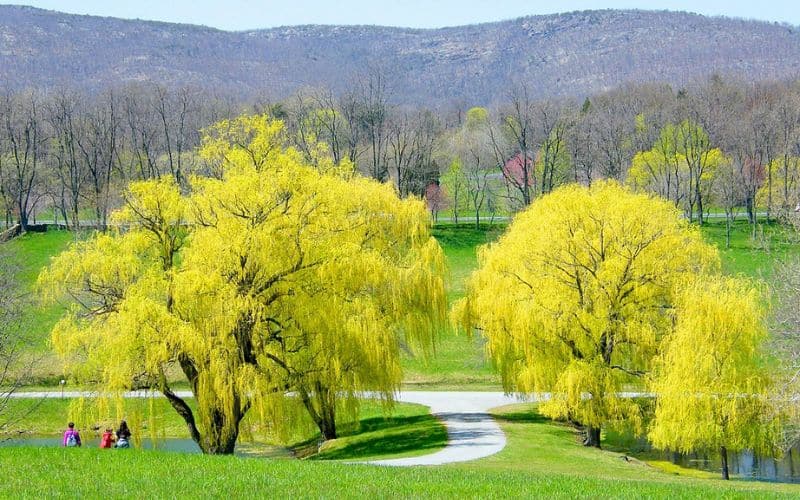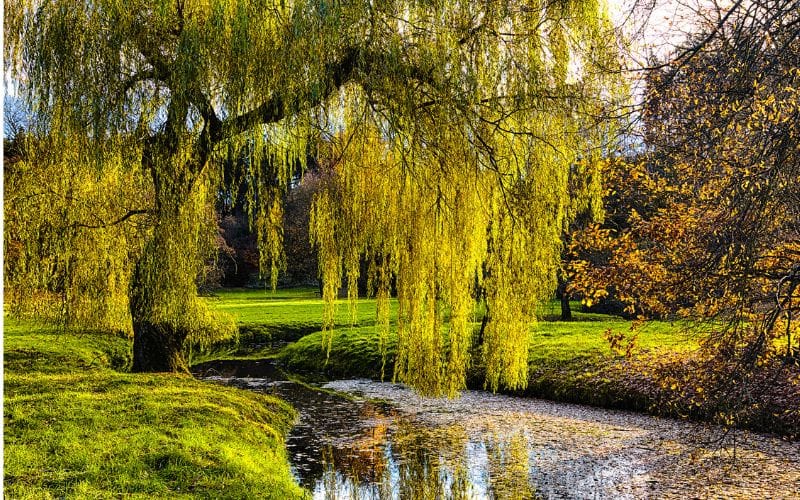
Willow Trees (Salix): What Makes Them Unique?
Willow trees, belonging to the genus Salix, are a fascinating group of trees and shrubs known for their graceful appearance and versatile uses. With over 400 species, ranging in height and type, willows are native to various areas, including Ontario. Their distinctive leaves, often appearing in a bright green hue, add to their charm.
The Weeping Willow: A Symbol of Elegance
The Weeping Willow, a species that has captured hearts worldwide, is known for its drooping branches that create a cascading effect. This tree’s height and unique appearance make it a favorite among garden enthusiasts. But what’s the story behind this elegant tree?

Yellow Willows of Ontario: What Are Their Distinctive Features?
In Ontario, the Yellow Willow is a native species that stands out for its vibrant yellow catkins. These trees grow in wet conditions, often near the water’s edge, and their flowers bloom in the early season, providing food for various bird species.
Weaving with Willows: How Are Traditional Crafts Related to These Trees?
Willows have been used to weave baskets and other crafts for centuries. The flexible branches, especially when wet, can be twisted and turned to create intricate patterns. This traditional art form continues to thrive in many areas, showcasing the willow’s functional and artistic value.
Birds and Willows: What Relationship Exists Between Birds and Willow Trees?
Willows provide shelter and food for various bird species. The dense shrub areas are ideal nesting sites, while the seeds and catkins serve as nourishment. This relationship highlights the willow’s role in supporting the local ecosystem.
The Many Species of Salix: How Do They Differ and Relate to Each Other?
From the towering Black Willow to the delicate shrub varieties, the Salix genus is diverse. Identification can be complex, with variations in leaves, flowers, and growing conditions. Some thrive in dry soil, while others prefer wet areas. This diversity reflects the adaptability of these native plants.

Growing Willow Trees in Your Garden: How to Plant and Care for Them?
Planting a willow tree in your garden requires understanding the specific needs of the species. From soil type to sunlight, these factors influence the tree’s growth and health. Regular care, including pruning and monitoring for diseases, ensures that your willow thrives.
The Black Willow – A Native Treasure: What Makes This Species Stand Out?
The Black Willow, native to North America, is known for its dark bark and sturdy structure. Growing near water bodies, this tree’s wood is often used in construction. Its majestic appearance and practical uses make it a valuable addition to the landscape.
Environmental Impact of Willows: How Do They Contribute to the Ecosystem?
Willows play a vital role in stabilizing soil, preventing erosion, and providing habitat for wildlife. Their roots help maintain the water’s edge, and their leaves create a microclimate that supports various plant and animal life.

Willow Tree Identification Guide: How to Recognize Different Willow Species?
Identifying willow species requires observing various characteristics, including leaves, flowers, height, and growing conditions. From the Weeping Willow’s graceful form to the Black Willow’s robust structure, each species offers unique features.
Conclusion: The Timeless Allure of Willows
The willow tree, with its diverse species and multifaceted roles, continues to fascinate us. Whether it’s the elegance of the Weeping Willow, the vibrant Yellow Willow of Ontario, or the traditional weaving crafts, willows enrich our lives in countless ways.
From their ecological significance to their aesthetic appeal, willows are more than just trees and shrubs. They are symbols of grace, resilience, and connection with nature. As we explore the world of willows, we discover a rich tapestry of life that resonates with our own human experience.
The content of this exploration invites us to reflect on the beauty and complexity of nature, reminding us that even the most common trees, like the willow, hold secrets waiting to be uncovered.
So next time you walk by a willow tree, take a moment to appreciate its grace, ponder its history, and celebrate its contribution to the world around you. The whispering willows are calling, and their story is waiting to be told.








